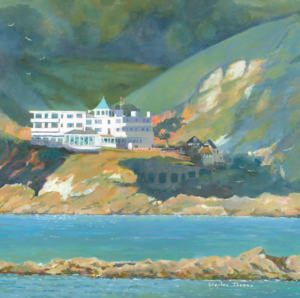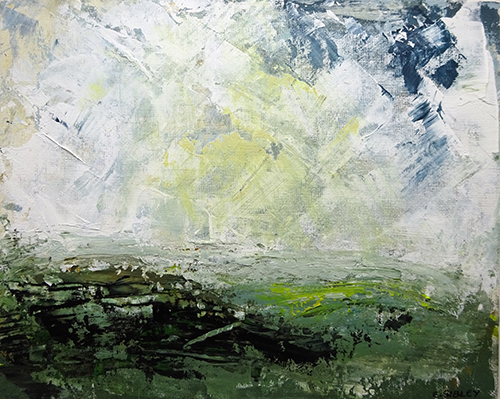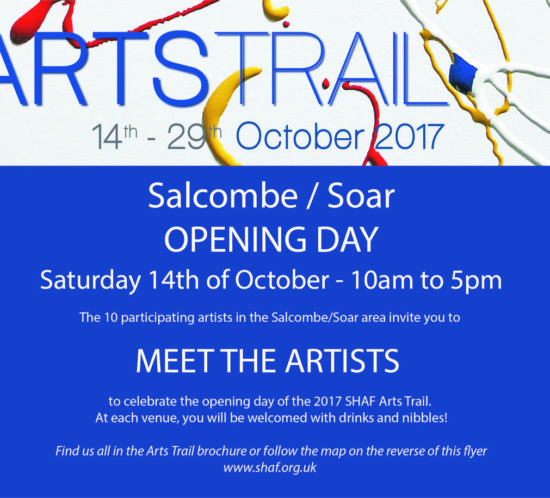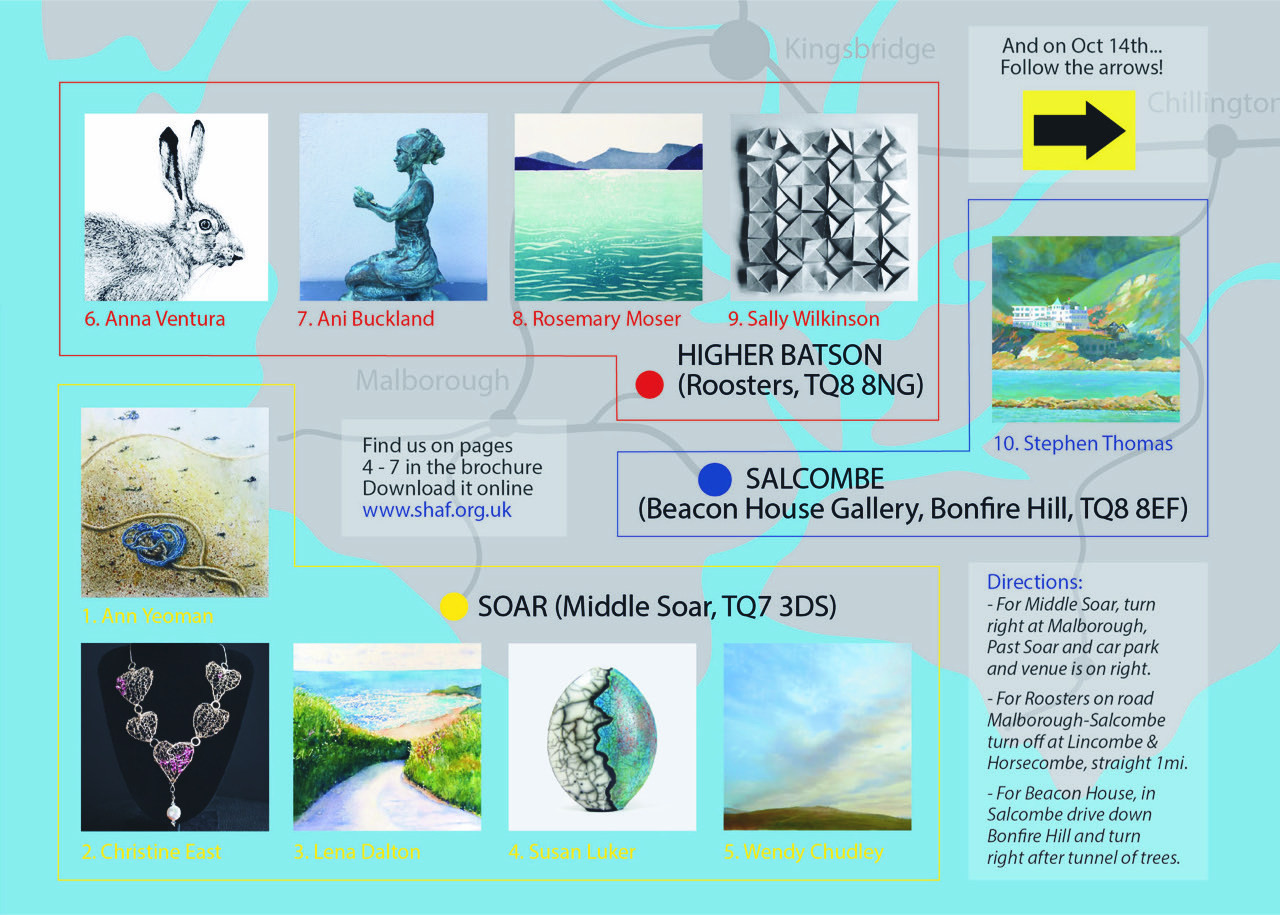SOLD! Shifting Sands at Burgh Island I
Burgh Island is a popular destination and Shifting Sands at Burgh Island I is one of many paintings in my collection which incorporate this iconic view.
This particular painting is an acrylic. And it’s now sold, on Day 1 of the SHAF Arts Trail.
The purchaser has kindly agreed to leave the painting with me so it can be enjoyed by those visiting us during the Arts Trail, and number 120 now has a red dot on it to make sure I don’t sell it again …
What’s the SHAF Arts Trail?
 This year, the SHAF Arts Trail runs for two whole weeks, including half-term week, until October 29th
This year, the SHAF Arts Trail runs for two whole weeks, including half-term week, until October 29th
The South Hams Arts Forum (SHAF) is a lively, actively engaged association of artists and craftspeople from across the region.
SHAF membership is extremely diverse, so while some artists create in purpose-built studios, others produce their work at the kitchen table. Consequently, the Arts Trail will lead visitors to some artists working in their home studios – as is the case for me – and to others exhibiting in galleries and exhibition halls.
At each venue, visitors will find artists happy to discuss their art-form, explain the processes involved and provide the opportunity to view, appreciate and buy unique pieces of work.
Why did I paint this one of Burgh Island?
The iconic Art Deco Hotel which dominates Burgh Island was owned and managed for many years by Tony Porter and his wife Beatrice. Tony called it the Great White Palace and it has featured in many films and television dramas based on Agatha Christie novels.
I’ve lost count of how many times I’ve painted it, but this one, in the sky, I included a vapour trail to remind me of a flight from Gatwick to Malta a while back. For some reason, the pilot chose to go west before turning south. Seeing this spectacular coastline from the air was a magical experience.
Are there more views of Burgh Island for sale? Yes!
 Most artists prefer the view as seen from Bigbury but here I have attempted to capture the subject as seen from Hope Cove.
Most artists prefer the view as seen from Bigbury but here I have attempted to capture the subject as seen from Hope Cove.
The massive cliffs of the mainland give a dramatic backdrop, while the rocks in the foreground underline its isolation. And, the late afternoon sun turns the Great White Palace into a glorious white beacon.
It is an acrylic, mounted and framed, and costing £400.
That’s a lot of money …
Affordable art!
I also have various views of Burgh Island available as fine art greetings cards. If you purchase directly from Beacon House during the Arts Trail, they cost £2 each, or three for a fiver.
And, we have delicious cake … no charge!



 Elaine Sibley is one of 60 artists opening their studios for the SHAF Arts Trail. As you’ll see below, Elaine wears two hats: as a jeweller and as a painter.
Elaine Sibley is one of 60 artists opening their studios for the SHAF Arts Trail. As you’ll see below, Elaine wears two hats: as a jeweller and as a painter. She originally studied art but then went on to study Resistant Materials where she developed an interest in working with precious metals. She worked as a teacher of Design and Technology while designing and making jewelry and selling through local galleries and open studios. Since retiring from teaching last year, she has found time to experiment and expand her work and now runs workshops from her studio.
She originally studied art but then went on to study Resistant Materials where she developed an interest in working with precious metals. She worked as a teacher of Design and Technology while designing and making jewelry and selling through local galleries and open studios. Since retiring from teaching last year, she has found time to experiment and expand her work and now runs workshops from her studio.



 SHAF Arts Trail brochures are available in libraries, information centres and many other places in the South Hams. There are 18 SHAF Arts Trail venues, each with one or more artists displaying their work and available for you to see them at work, and to answer your questions.
SHAF Arts Trail brochures are available in libraries, information centres and many other places in the South Hams. There are 18 SHAF Arts Trail venues, each with one or more artists displaying their work and available for you to see them at work, and to answer your questions.
